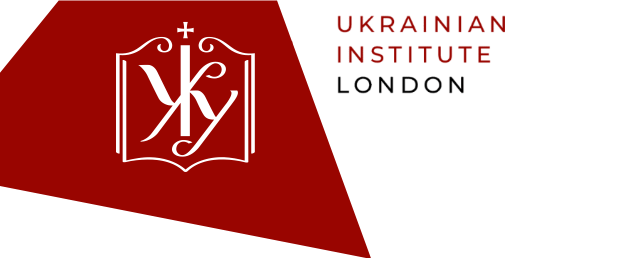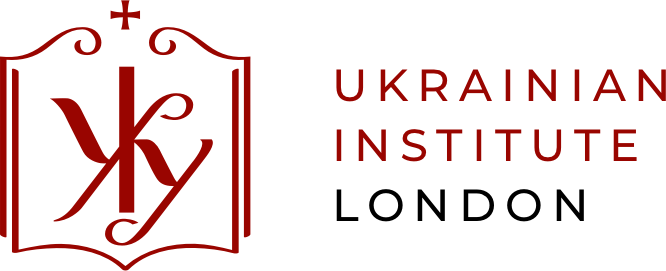Summary of ‘Jews and new Ukraine’, a panel discussion at JW3 held by the Ukrainian Institute London in partnership with Ukrainian-Jewish Encounter.
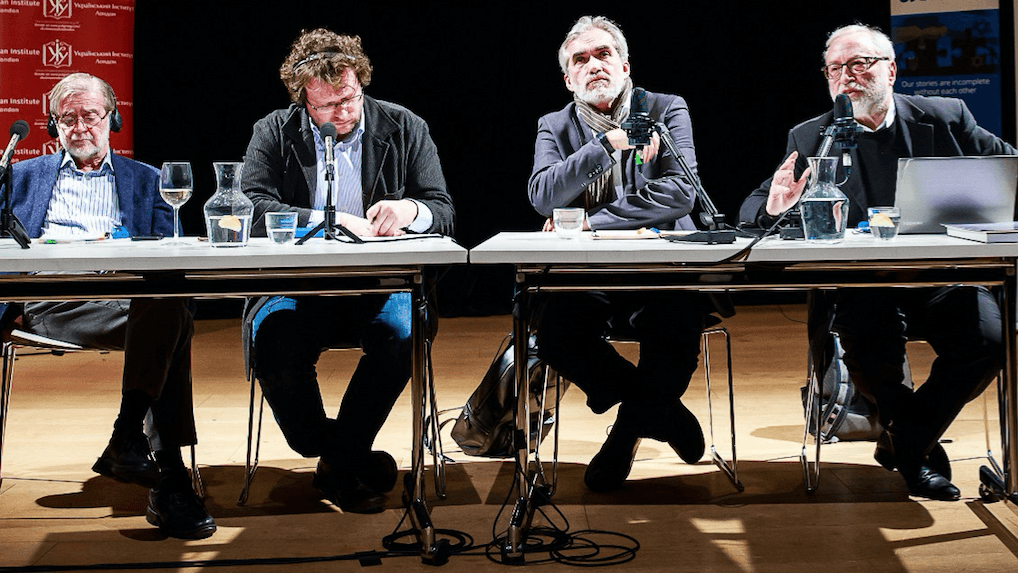
AUTHOR
Maria Montague, Assistant Director, Ukrainian Institute London.
Jewish communities have lived on the territory of contemporary Ukraine since the late 9th century, yet the Jewish-Ukrainian identity is a very recent phenomenon. Jews in Ukraine who previously self-identified as Soviet Jews or Russian Jews increasingly see themselves as Ukrainian Jews, particularly following the Euromaidan revolution of 2013-14.
This identity shift, as well as the complex history of Jewish-Ukrainian relations, was explored in a landmark discussion on 29 January 2019 with experts Professor Yaroslav Hrytsak (Ukrainian Catholic University, Lviv), Josef Zissels (Chairman of the VAAD Association of Jewish Communities of Ukraine) and Mark Freiman (attorney and Board Member of Ukrainian-Jewish Encounter), moderated by journalist Peter Pomerantsev. The event was organised by Ukrainian Institute London, in partnership with Jewish Community Centre JW3, where it was held, and Ukrainian-Jewish Encounter, who sponsored the event.
‘It’s very hard to tell one story of Ukrainian-Jewish relations; there are several stories’
Professor yaroslav Hrytsak
‘It’s very hard to tell one story of Ukrainian-Jewish relations; there are several stories’, commented Professor Hrytsak. On the one hand, there is a long history of Ukrainian-Jewish dialogue. A particularly important period of solidarity between Jews and Ukrainians was the emergence of Zionism and Ukrainian nationalism at the turn of the 20th century, as these movements were both in resistance to the imperial rule of the Russian and Austro-Hungarian Empires over the territory of modern-day Ukraine. Hrytsak noted that the first national group to demand that Jews should be recognised as a nation were Ukrainians, and in 1908 a Ukrainian deputy argued for this in the Austro-Hungarian parliament.
On the other hand, there is a long record of anti-Jewish violence on the territory of Ukraine: starting with massacres of Jews during the Khmelnitsky Uprising in the mid-17th century, pogroms during the Russian Empire, anti-Semitism in the USSR, and the Holocaust under the Nazis. ‘This is a very painful, long record’, said Hrytsak.
How has a new Jewish-Ukrainian identity emerged from this fractured history? The turning point was the establishment of the Ukrainian state in 1991, agreed all of the speakers, which brought with it the possibility for Jews to identify with the new ruling elite.
But this possibility was not realised until the Orange Revolution of 2004-2005, and even more important, the Euromaidan Revolution of 2013-14. The Euromaidan sparked fundamental shifts in Ukrainian identity, and a turn towards Europe. Jews took part in this movement, highlighted Zissels, and three of the ‘Heavenly Hundred’ killed during the Maidan were Jewish.
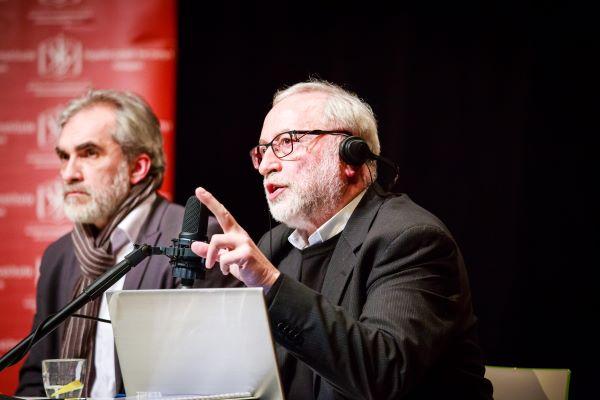
‘After 1991, we started re-building Jewish schools and synagogues. The state did not really help us, but they did not stand in the way either. People in Ukraine live in freedom. I feel affinity to Ukrainians, Crimean Tatars and others, as we are part of the same political nation. But I do not feel much in common with the Soviet or Russian Jews who retained the Soviet identity, even though we share the same ethnic and religious roots,’ said Zissels.
Yet, the increased patriotism following the EuroMaidan is not without complexity. Mark Freiman highlighted that there are two visions of the ‘new Ukraine’. The first is of a liberal, pro-European state, where Ukrainian nationhood is based on a civic rather than ethnic identity. However, Freiman cautioned that there is another vision, which is based on ethnic definitions.
Here, Freiman indirectly refers to the ultra-right parties in Ukraine that promote an ethnic conception of Ukrainian identity. However, in contrast to the narratives pushed by Russian state media, public support for these right-wing groups is minimal.
Zissels emphasised that the right-wing nationalistic parties in Ukraine garnered less than two per cent of the vote in the last parliamentary elections. Furthermore, levels of anti-Semitism in Ukraine are much lower than in other countries in Europe. Zissels cited statistics on the number of annual anti-Semitic incidents across Europe, relating to either physical violence or vandalism: 600 in Britain, 2000 in Germany and 800 in France. In Ukraine, there has not been a single physical attack against Jews in the last year, and only 12 incidents of anti-Semitic violence.
Hrytsak also reiterated that there is much less anti-Semitism in Ukraine than elsewhere in Europe, citing a recent study by the Pew Research Center. This does not mean to say that lower-lying anti-Semitism is not a problem in Ukraine, however. Hrytsak noted that there is a theme in popular conversation about “the Jewish yoke” in Ukraine, which has resurfaced in the context of the upcoming presidential elections. Yet, no politician on the state level dares to make anti-Semitism a topic in public discourse – and since the dissolution of the USSR and Ukrainian independence in 1991, there has been no state anti-Semitism.
National heroes or Nazi collaborators? Dilemmas of historical memory
Another question that complicates the understanding of anti-Semitism in Ukraine (and which is exploited by Kremlin-backed propaganda) is the controversial figure of Stepan Bandera, with whom the ultra-right groups are associated. Bandera was one of the leaders of the Ukrainian national movement, first against the Nazis and then against the Soviets, and by 1941 he was in a Nazi concentration camp. He promoted ethnic nationalism, and the movement in his name committed atrocities against the Jews and the Poles.
‘If you want to see Ukrainians divided, talk about Bandera’
Professor Yaroslav Hrytsak
‘If you want to see Ukrainians divided, talk about Bandera’, said Hrytsak. Bandera is remembered by many Ukrainians as a freedom fighter, and by others as an anti-Semite and Nazi collaborationist. Such paradoxes in historical memory are hardly unique to Ukraine, noted Peter Pomerantsev, and he drew the examples in Britain of Sinn Fein being viewed as heroes or as terrorists, and the challenge of how to deal with Britain’s colonial history.
Zissels commented, ‘Bandera and Shukhevych [a military leader of the Ukrainian Insurgent Army] cannot be heroes for me. Because I am a Jew and I hold this ancestral memory. But I understand why they are heroes for some Ukrainians. They died in their fight for Ukrainian independence; this is enough for people to remember them as heroes. I do not think that any Ukrainians glorify these figures for killing the Jews; people do not think about this. They just remember that these figures died for Ukraine, that’s it.’
Zissels also noted that the collaboration of the Ukrainian Insurgent Army with the Nazis is not the only story to tell of Ukrainians during the Holocaust; there were also around 2500 Ukrainians who risked their lives to hide Jews from the Nazis.
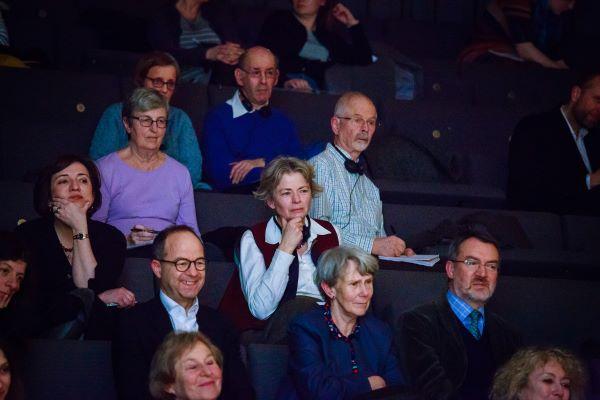
The many fractures and paradoxes in the history of Ukrainian-Jewish relations make the recent emergence of a new Jewish-Ukrainian identity all the more striking. This panel discussion delved into very many issues, and the lively Q&A session with the audience touched upon even more challenging questions about Jewish and Ukrainian identity and historical memory. The overarching message, though, was that anti-Semitism is much less prevalent in contemporary Ukraine than might be expected, and that a shared vision for a new democratic and inclusive Ukraine has united Jews and Ukrainians. As highlighted by Hrytsak, ‘For the first time, there’s a Jewish-Ukrainian identity and this is something to cherish.’
